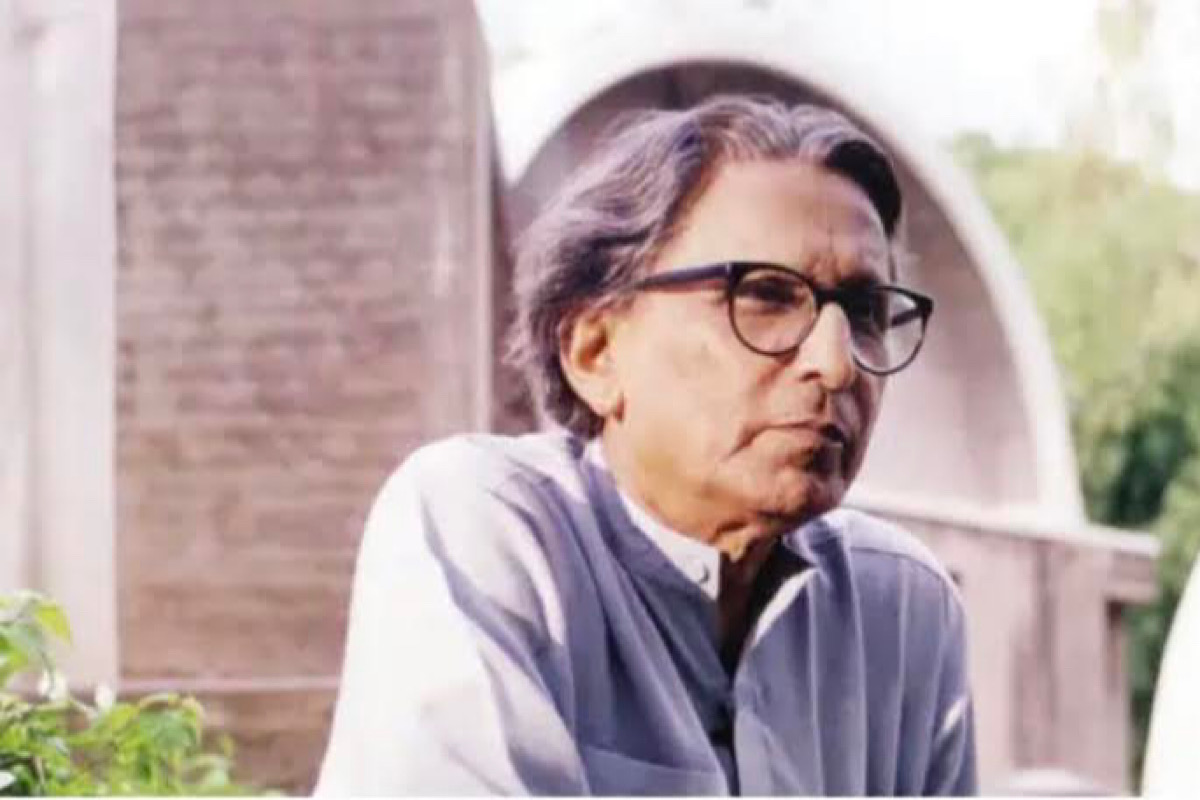The work of acclaimed architect, thinker, institution builder, and India’s first Pritzker laureate Prof. Balakrishna Doshi who passed away recently, will remain with us. Among other prestigious honours, he was a recipient of the Padma Bhushan and the Royal Gold Medal awarded by the Royal Institute of British Architects (RIBA) for his precious work and contribution to the field of architecture. For those of us who were fortunate to live in his architectural productions, they will be within us as lasting, delightful, profound and inspiring memories.
Prof. Doshi’s work occupies a seminal position in the iconic works of modern architecture. Though he worked with Le Corbusier and Louis Kahn, both towering and influential architects of the modern movement in architecture, his work has an inventive quality that does not conform to any particular style and strikes a deep personal connect with the people inhabiting them and their culture. In a young independent India, he strived to blend modern ideas with our traditions in his works and set meaningful directions for architectural practice and Indian urbanism.
One of his delightful and inspiring works is the prestigious Centre for Environmental Planning and Technology (CEPT) campus, founded and designed by Prof. Doshi in its early phase. I had the good fortune of walking into its portals a little more than three decades ago to pursue postgraduate studies in architecture. It was a precinct where elegant modern buildings in exposed brick and concrete, the ground below, landscape, people, light and shade all seemed to come together in a timeless unitary rhythm that lingers as an inspiring and delightful memory.
Our studio on the first floor of the school of architecture building was a homely space with large wooden doors opening into a balcony overlooking the campus. On this beautiful and humane campus, we were taught by erudite and committed teachers. We made wonderful friends, read many good books, burnt much midnight oil in the studio and listened to visiting experts from the world over.
During this entire journey on the campus architecture of the place was an inextricable part of our life. We were at once in the masterly work, and yet at another moment, it became a subtle, sober and profound backdrop to our learning and an existential foothold.
We were also constantly aware of being part of a great institution and enterprise of learning, a larger profound idea of a master architect’s contemplative space and his search to create a sublime crucible that could nurture our life. The invaluable contribution of Prof. Doshi to institution building and education as a visionary, caring teacher and architect was palpable.
A few years later, I walked into the Indian Institute of Management (IIM) campus located in Bengaluru, yet another sublime and poetic work of the master architect. This work defies description and should be experienced to unravel its richness. To me, it seemed like an infinite, ancient and timeless, exquisite and expansive temple complex in stone and concrete which was modern in its disposition, inundated by landscape and light, and continuous with the rich architectural heritage of our country. Here it also seemed that the architecture of the place was but an expression of the master architect’s contemplative and meditative journey, a search and longing perhaps to touch the vibes of our land, or an intangible sacred realm. It was clear that an extraordinary sense of measure, order, and restraint integral to his masterly craft gave manifest form to his search as a splendid work of architecture with a transcendental aura that celebrated life.
In retrospect, this rare synthesis of his deep knowledge, contemplation, sublime search for the unmanifest, masterly craft, deep love of life and people, seems to have become a Sangath, his studio embedded in the landscape, or a socially inclusive housing project at Indore with lessons for city building. In another context, the synthesis becomes a rich tapestry of canals, landscape and neighbourhoods to human scale in his master plan proposal for the Amaravati Capitol Complex. The same spirit pervades his splendid and vast oeuvre.
With their innate strength and richness, Prof. Balakrishna Doshi’s works and ideas will remain with us, both as precious artefacts and as a profound realm to turn to, pause, reflect, and contemplate. In times when spectacular and vehement transformation of our cities seems to be an emerging norm, when glitzy and opulent buildings are often celebrated as icons, Prof. Doshi’s elegant and sober, deeply thoughtful and meaningful, exquisite and timeless architectural productions, rooted in our culture and climate, will stand as a counterpoint. They will also be sentinels and guiding beacons in our collective conscience for times to come.
(The writer is practising architect based in Hyderabad)












